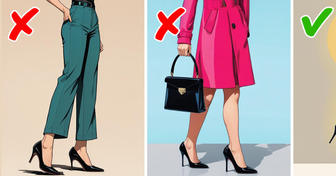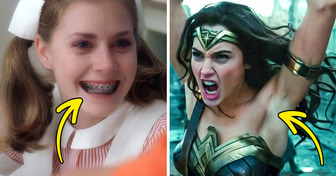Michael Jackson’s Son Shares Heartfelt Memory — And It’s Hitting Everyone Hard

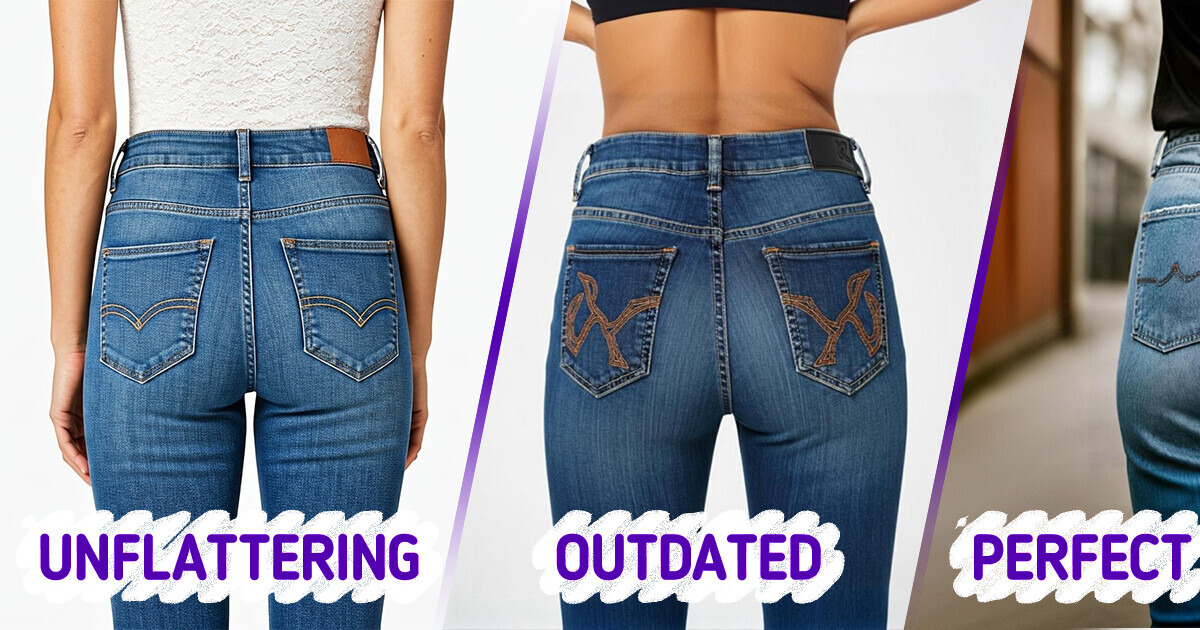
Finding the perfect pair of jeans can sometimes feel like an epic quest — a journey filled with frustration, uncertainty, and fitting room despair. But it doesn’t have to be that way! Everyone deserves the “aha!” moment when they slip on a pair of jeans that fit like a glove. Armed with the right knowledge, you can confidently navigate the world of denim and finally say goodbye to denim dilemmas. With this guide, you’ll unlock the secrets to the perfect fit, ensuring you’ll never have to settle for a less-than-ideal pair again.
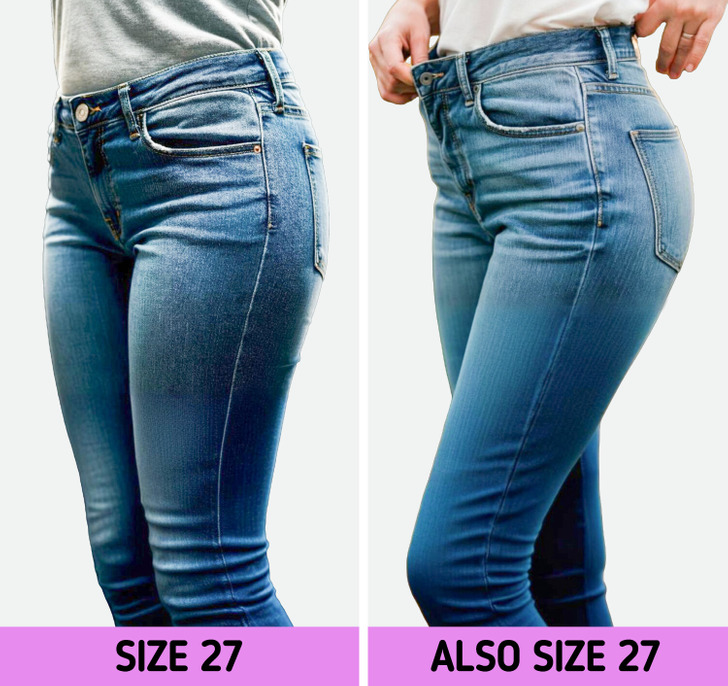
It’s a common mistake: you buy jeans in the same size from each store and hope they’ll fit like your last pair. But as many denim shoppers know, sizes can vary significantly across brands and styles. You might be one size in one brand and a completely different size in another—frustrating, right?
There’s no universal sizing standard for jeans, so what’s labeled as a size 28 in one brand might feel more like a size 30 in another. Even when you stick to the same size, the fit can change depending on the fabric composition, the rise of the jeans, and even the country of origin. Jeans made in Asia often fit more snugly compared to those made in North America. Add to that the stretch factor: jeans with added elastane or spandex will mold to your shape, while more rigid, non-stretch denim may feel tighter even if they are technically the same size.

Forget about the size tag. Instead, focus on the key measurements:
Pro Tip: Save these measurements in your phone for easy reference while shopping.
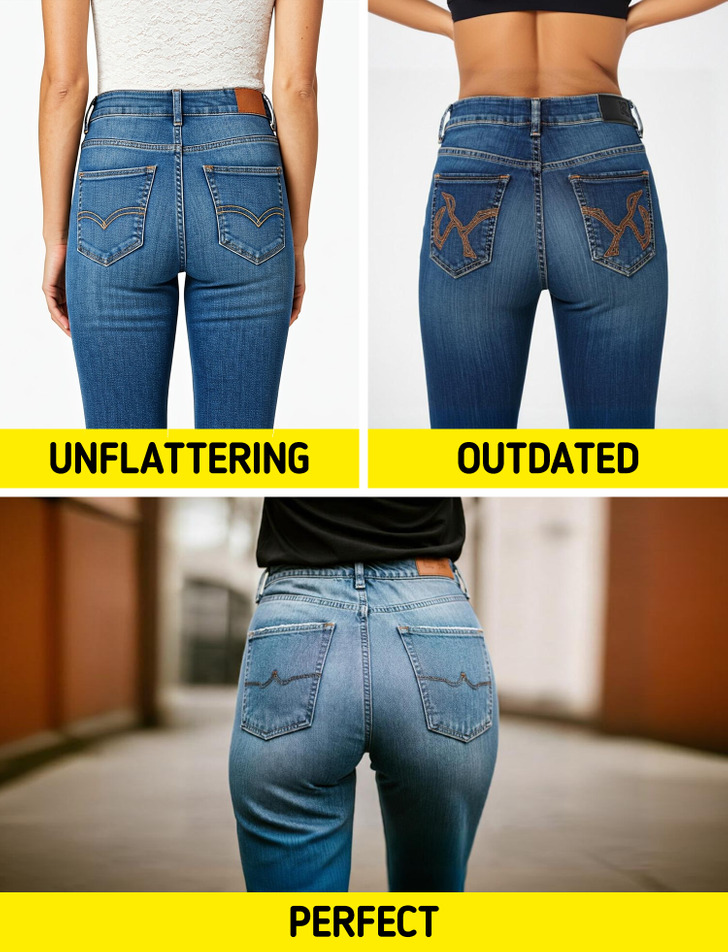
It’s a detail that’s easy to overlook, but the placement of pockets on your jeans can drastically affect how they fit and how flattering they look. Low-hanging pockets, often found in more relaxed styles, can create a “droopy” effect, which can make your rear look saggy. This is a major concern when it comes to achieving a flattering silhouette.
Higher pockets, on the other hand, can give your backside a natural lift and a more sculpted appearance. Many fashion experts agree that strategically placed, slightly higher pockets help accentuate the curves and elongate the legs, creating a streamlined effect. It’s not just about where they sit—it’s also about their size. Oversized pockets can add bulk, while smaller pockets positioned thoughtfully can draw attention to the waist, balancing out your proportions.
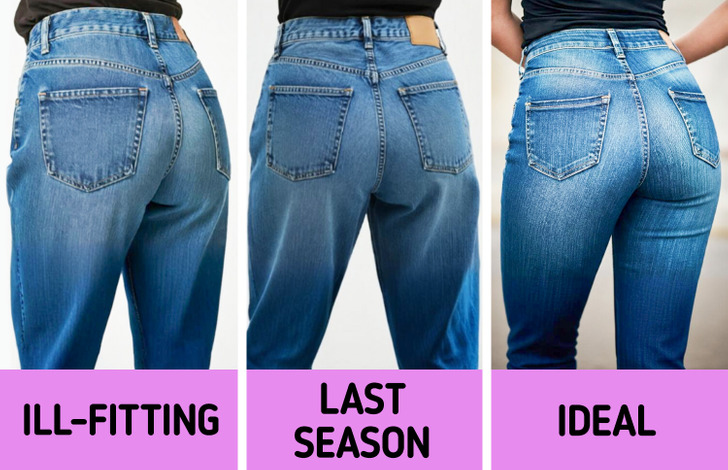
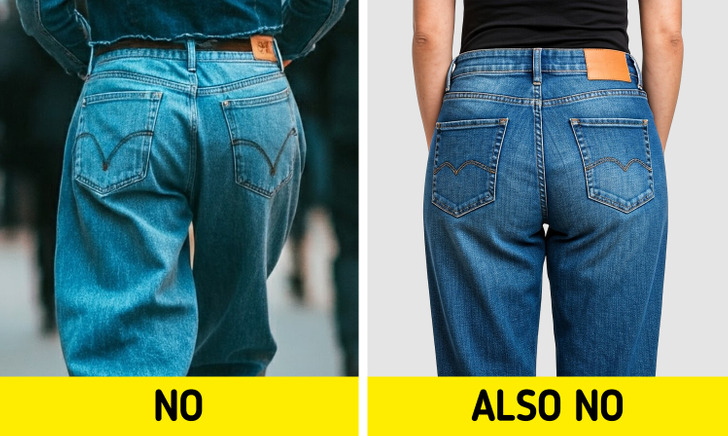
When shopping for jeans, it’s essential to consider not just the fit, but the fabric composition. Denim is a versatile fabric, but the mix of fibers can drastically affect how a pair fits, feels, and wears over time. If you’re looking for a snug, form-fitting look that retains its shape, opt for a blend with a small percentage of spandex or elastane—typically 1-3%. This gives the denim just enough stretch to hug your curves without losing its shape after a few wears.
On the other hand, if you’re after a more vintage feel or a pair of jeans that will mold to your body over time, look for denim with a higher cotton content—ideally 98% cotton or more. Cotton-dominant denim tends to become softer and more comfortable with age, but it can shrink after the first few washes, so buying a size slightly larger than usual might be a smart move.
The fabric choice also impacts the overall durability of the jeans. Lighter denim, such as those used in summer-weight styles, may wear down quicker than heavier, more robust fabrics designed for colder months. Knowing the fabric makeup can help ensure your jeans not only fit well but also last longer.
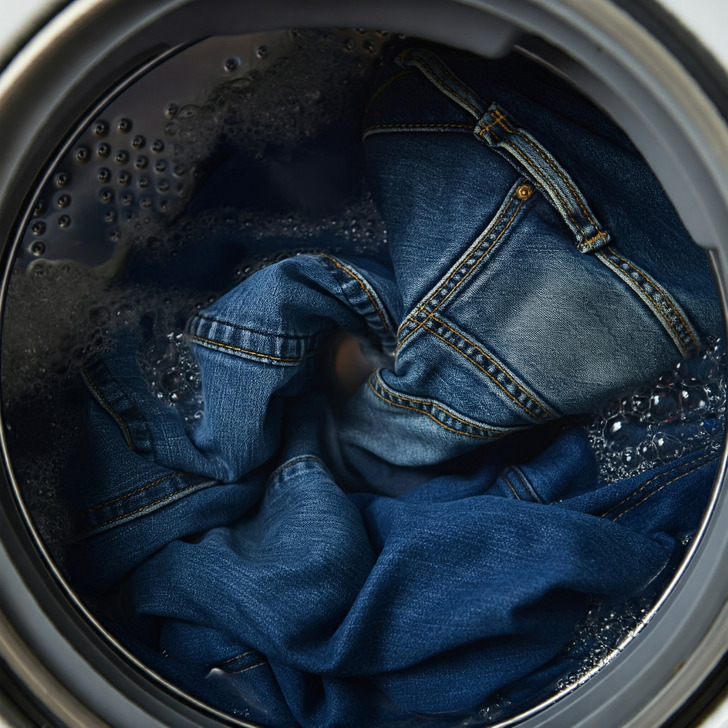
When it comes to denim care, less is more—especially when it comes to washing your jeans. Many denim enthusiasts and experts recommend avoiding the laundry cycle after every wear. In fact, some suggest you wear your jeans several times (three, four, or even five!) before giving them a wash. Not only is this good for preserving the fabric, but it also helps your jeans break in naturally and take on a more personalized, worn-in look over time.
Frequent washing can cause the fabric to lose its shape, fade prematurely, and even cause the denim fibers to break down, affecting the longevity of your favorite pair. Instead, spot-clean stains and air your jeans out between wears to keep them fresh. When it’s time for a wash, make sure you follow the correct washing techniques to maintain the integrity of the fabric.
One of the simplest tricks to preserve the color and condition of your jeans is to turn them inside out before washing. This small step can make a big difference, especially with dark or indigo denim, which is prone to fading over time. By flipping your jeans inside out, you reduce the amount of friction the outside of the fabric experiences, minimizing dye loss and keeping your jeans looking fresh for longer.
Additionally, turning your jeans inside out helps protect the zippers, buttons, and other embellishments from getting damaged in the wash. These small steps can help extend the life of your jeans, ensuring that they maintain their quality and fit for years to come.
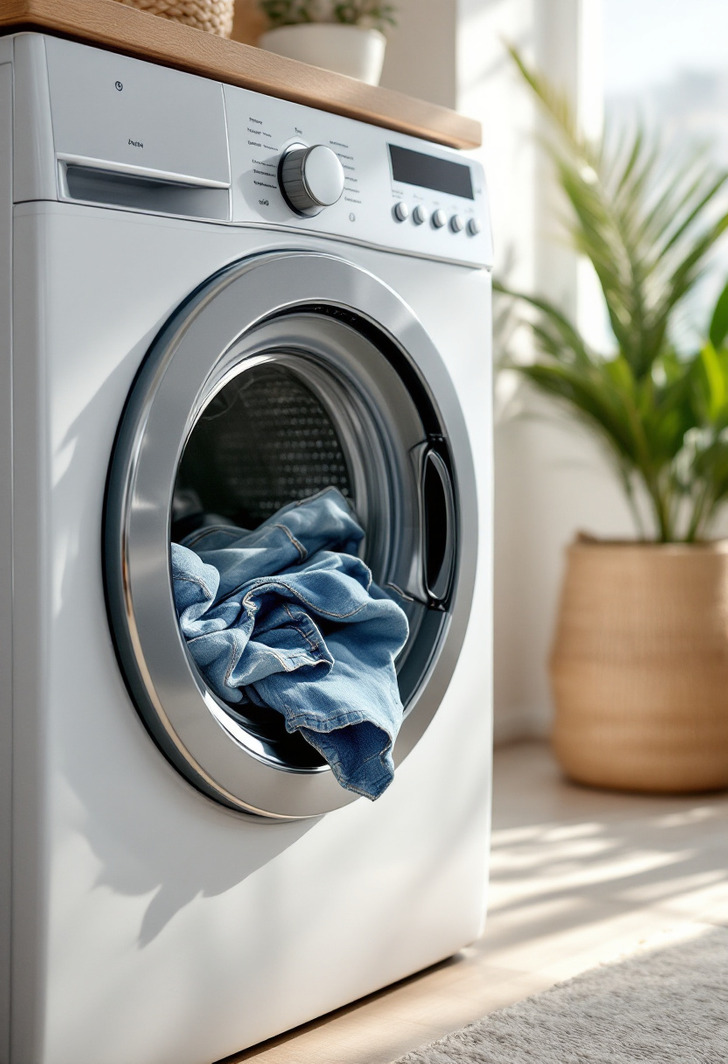
To further enhance your denim-washing routine, consider these additional tips:
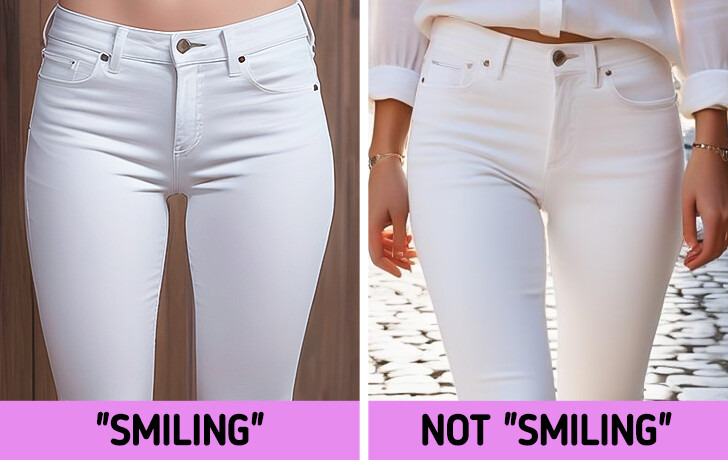
If you notice those pesky horizontal wrinkles or lines around the hips or front of your jeans, that’s your denim’s way of telling you something isn’t quite right with the fit. These “smiles” or draglines happen when the fabric struggles to stretch over your body’s natural curves, especially if the jeans were designed for a different shape.
When jeans pull uncomfortably across the hips, the stress is visible in the form of wrinkles, particularly around the crotch area, where the tension is most apparent. This means your jeans are working too hard to fit, and no amount of adjusting will fix the underlying issue.
To avoid this, look for jeans that are designed with your body type in mind—whether that means a curvier fit with extra room in the hips or a rise that better accommodates your proportions. The right fit should flow over your body without creating stress lines. When your jeans fit properly, you’ll notice smoother, more flattering lines that require no constant adjustments. Your jeans should fit you with ease, not fight against you.

Never underestimate the power of a good tailor. While it may seem tempting to buy jeans off the rack and assume they’ll fit perfectly, a simple alteration can elevate a pair of jeans from “okay” to “outstanding.” Whether it’s shortening the length for a clean, precise hem or taking in the waistband for a snugger fit, small adjustments can make a world of difference.
Tailoring allows your denim to conform to your unique shape, creating a silhouette that flatters you from every angle. A well-tailored pair of jeans doesn’t just look better—it also feels more comfortable, giving you confidence with every wear. So, the next time you’re about to settle for a “good enough” fit, consider how a visit to the tailor could transform your jeans into the perfect pair.
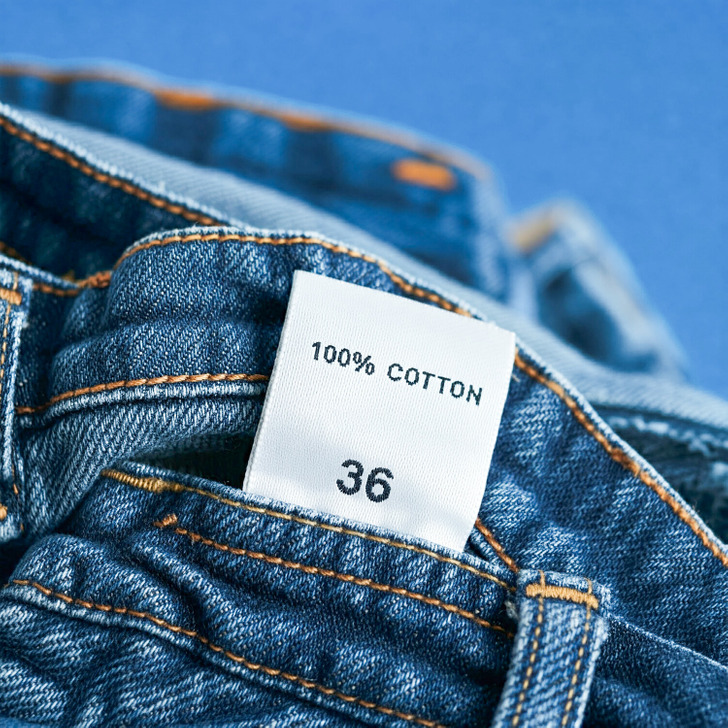
The key to finding the ideal pair of jeans isn’t just about size or style—it’s about the fabric. The composition of your denim is the unsung hero behind how they fit, feel, and wear over time. Before grabbing a new pair, take a second to inspect the label of your favorite jeans. They fit so perfectly for a reason, and that reason is typically in the percentages listed right there on the tag.
For a flattering, form-fitting look that maintains its shape, look for jeans with a small amount of elastane or spandex—usually 2-3%. This slight stretch ensures that your jeans hug every curve without losing their shape, avoiding the dreaded sagging at the knees and waistband gaping.
If a vintage look is more your vibe, go for jeans with a higher cotton content—ideally 98% cotton or more. These jeans may shrink slightly after a few washes, so sizing up might be wise, but they’ll break in beautifully over time, developing a personalized fit as they soften.

For everyday wear, a balanced composition of 92-98% cotton with a bit of stretch is often ideal. This blend offers both structure and flexibility, allowing the denim to mold to your body while still retaining its integrity throughout the day. Remember, fabric composition isn’t just about comfort—it’s about longevity. The right fabric can help your jeans age gracefully and continue to look sharp, season after season.
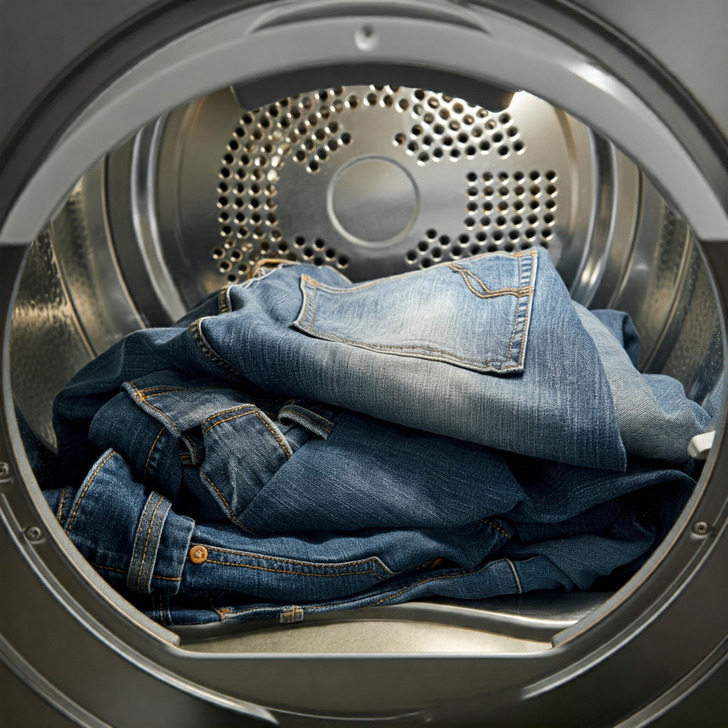
Your favorite jeans are silently suffering in the dryer. Heat is denim’s worst enemy—especially when it comes to maintaining the perfect fit and color. Excessive heat breaks down the fabric’s fibers, causing them to shrink, fade, and lose their stretch. That gorgeous faded look? It’s slowly being fried out every time you toss your jeans into a hot dryer.
Instead, opt to air-dry your jeans whenever possible—lay them flat or hang them by the waistband. If you’re in a rush, use the dryer’s lowest heat setting and remove the jeans while they’re still slightly damp to avoid the dreaded shrinkage. This extra 20 minutes of care can prolong the life of your jeans for months if not years. Your investment deserves better than a premature end due to heat-induced wear and tear.
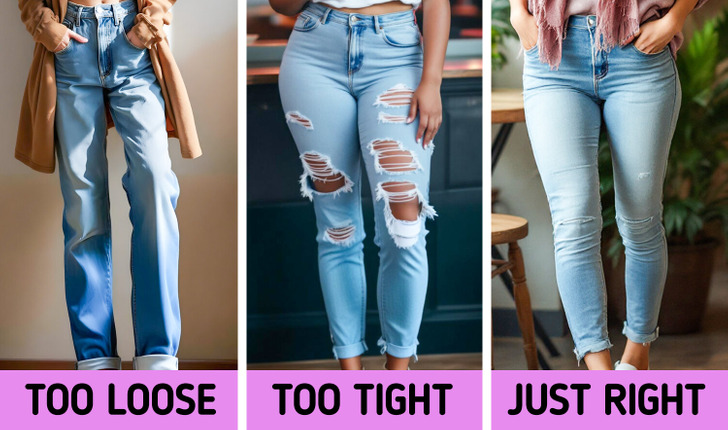
The waistband of your jeans is the foundation of a perfect fit. It’s where comfort and style converge, and finding the right one can make or break your outfit. The ideal waistband should gently “kiss” your waist—not too tight to leave indentations, and not too loose to cause constant readjustments.
A waistband that’s too loose will have you pulling up your jeans all day, making a belt more of a necessity than an accessory. On the flip side, a waistband that’s too tight will leave you feeling constricted and uncomfortable, especially when sitting down. If you notice the waistband digging into your hips, or if you get a “muffin top” effect, it’s a sign your jeans are too small.
The perfect waistband is one that stays in place, feels comfortable, and doesn’t require constant adjustments. Ideally, you should be able to slip two fingers underneath the waistband without any strain. If your waistband fits just right, you’ll forget you’re even wearing jeans—and that’s the goal.
Now that you know how to avoid common jeans mistakes, you’re one step closer to finding your perfect fit. But there’s more to know—like how to choose the right fabric and what styles really flatter your shape. Stay tuned for our next article, where we’ll dive even deeper into making jeans shopping easier and more successful.



